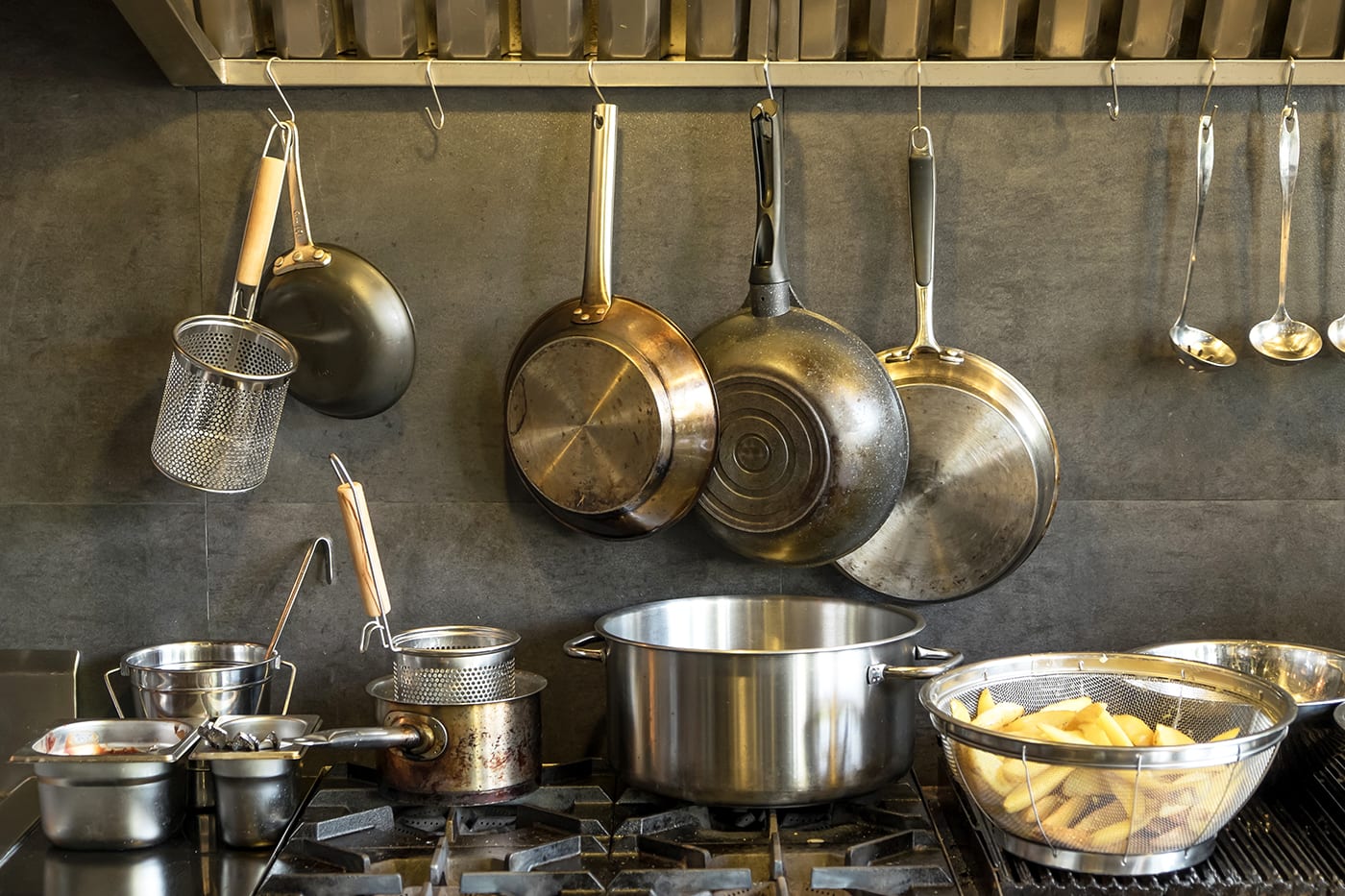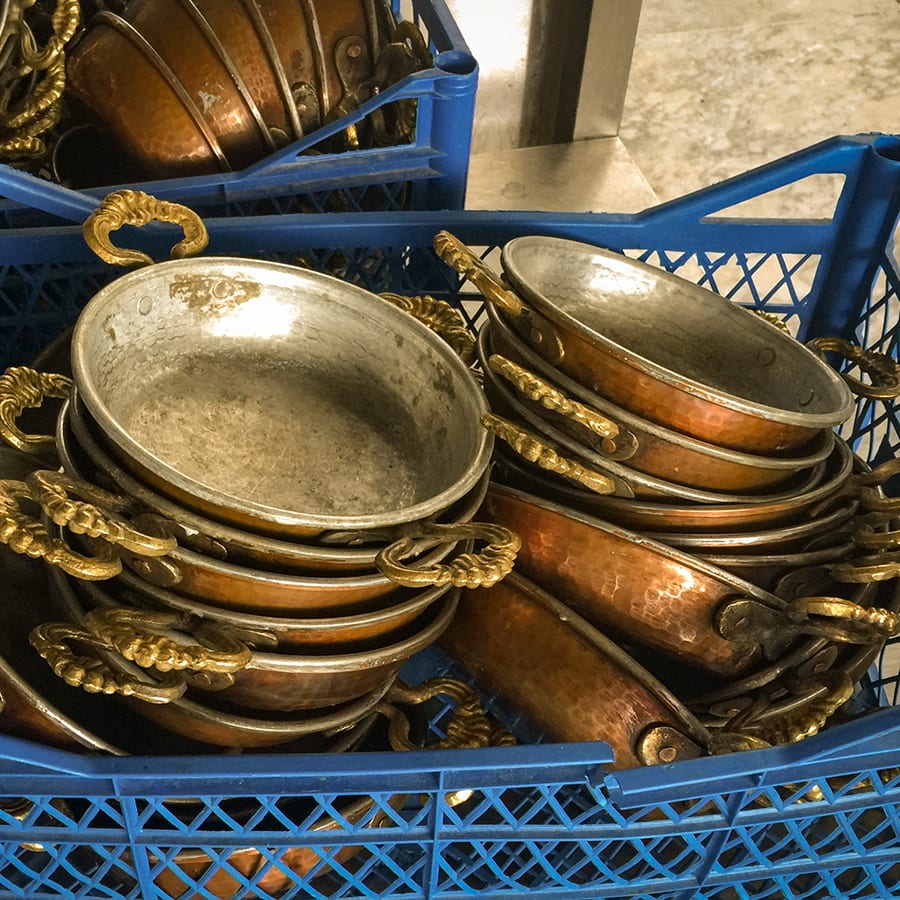
How to Reuse and Recycle Old Pots and Pans
DECLUTTER YOUR CABINET AND WITH THESE EASY TIPS
By Mia Bencivenga
February 9, 2021
Whether your old pots and pans are rusted from a lack of use or have seen one too many burnt casseroles, it’s hard to know what to do with them. But luckily, we have a few options that’ll help you deal with old cookware, that doesn’t include making a trip to the landfill.
1] Give them a second life.
So you aren’t using that old pan or pot in the back of the cabinet for cooking. But could you be using it for something else?
Could it become a great new container for cookies and candies? Could you paint it and make it a fun piece to decorate your kitchen or dining room walls? If the pots and pans aren’t too heavy, maybe you give them to a little one in your life who would use them during playtime.
Before you resign yourself on tossing something out, it’s always good to see if it can serve you in new ways. This brings us to our second point...
2] Refurbish those old pots and pans.
Have an old cast-iron or stainless-steel pan? Don’t be so quick to ditch it.
There are ways to restore your cast iron pan.You can find a complete tutorial here, but the gist is, you need to give your pan a good scrub with baking soda and dishwashing liquid (be sure to use a scrub brush so you can get in all the nooks and crannies!). Then, you’ll want to rinse it off. Once it’s dry, rub it all over with a good shortening to reseason it. Throw it in the oven at 350ºF for an hour and voila! Restored and seasoned pan.
Cleaning with baking soda
Baking soda is also helpful for cleaning baked-on messes on stainless steel pans. There are plenty of cleaning tips and tricks, but overall, it isn’t too complicated — it will just take some time. Just add a small amount of baking soda to your pan, and then add about a ¼ cup of water. Boil the water and let it evaporate. While the pan is still hot use a cleaning brush or scouring pad to scrub off the mess.
But what if those methods don’t work for you, or you don’t have the time or desire to refurbish your pans? No problem!
3] Donate or sell them.
Believe it or not, someone out there may want your old or damaged pots and pans.
Try the Freecycle Network where you can find people near you who might be interested in taking them off your hands. Craigslist and Facebook Marketplace are also sites for getting rid of old cookware. Some people are really into refurbishing and reselling cast iron and stainless steel pans, so you could even end up making some money for something you consider junk.
If your pots and pans are in good shape, you should also consider donating them to places like Goodwill and the Salvation Army.
One thing to note: if your pan has been treated with a nonstick coating and has been scratched up or chipped, it is not safe to give to someone else, nor can it be repaired. You’ll have to find a place to recycle it, which brings us to our next step...
4] Recycle that old cookware.
If your pots and pans are too far gone, they aren’t doomed to the dumpster. In fact, you can still recycle many of them. But you can’t just throw them in your recycling bin. Here’s what to do:
First, check your local waste management company to see if you can recycle them through your provider. Unfortunately, most facilities can’t take them, so you’ll probably have to drop your pots and pans off at a facility that can handle this type of product specifically.
Ferrous vs nonferrous metal recycling.
One thing that will help you in your search is to know whether your pan is made of ferrous or nonferrous metal.
Ferrous metals contain iron, nonferrous do not. Your pots and pans are likely made from nonferrous metal, like aluminum, copper, and stainless steel. An easy way to tell if your pans are ferrous or not is to see if a magnet is attracted to them. If a magnet sticks to your pans, you’ve got a ferrous metal on your hands.
Once you know what type of metal your pans are made of, it’s time to find where to drop them off. Many scrap metal dealers will take them — and some will even pay you for your trouble.
Where to recycle metal in Pittsburgh
If you live in the Pittsburgh area, try Northside Scrap Metals Inc.,CastriotaMetals and Recycling and AAA Scrap Metals. Or, you can search for exactly what you want to recycle on Earth911 and a number of centers closest to you will pop up.
If your pan has been treated with a nonstick coating, just double check to make sure the scrap metal facility can take them. The nonstick coating (usually made from a type of plastic) will need to be stripped before recycling.
So, next time you find yourself wondering what to do with a scorched pan, know there’s plenty of ways to declutter your kitchen without contributing to the landfill.


Thank you for letting us know that we can determine if our pots and pans are made of nonferrous metal like copper if a magnet isn’t attracted to them. I was clearing out our basement junk when I noticed our old copper cookware, so I was wondering if I could sell them as scrap. I’ll keep this in mind and look for a recycling center that accepts them.